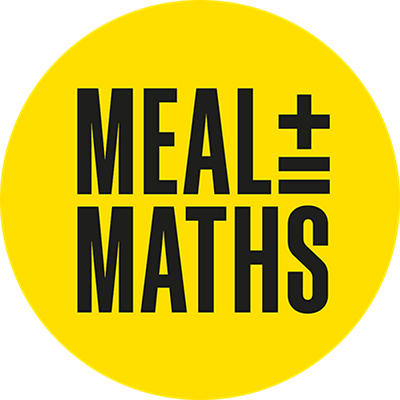New Year's EveFresh & ChilledBakeryFood CupboardFrozenBeer, Wine & SpiritsTea, Coffee & Soft DrinksHouseholdToiletries, Health & BeautyBaby & ToddlerPetHomeShop by OccasionNewOrganic ShopFirst For WelfareDietary & LifestyleWaitrose BrandsBrandsNewEveryday ValueChristmas DinnerDesserts, Pudding & CakeParty FoodChocolate, Sweets & NutsWine, Fizz & DrinksNo.1 ChristmasCards, Gifts, Wrap and DecorationsNewChristmas CheeseboardChristmas Breakfast & BrunchChristmas TurkeyParty FoodWine, Fizz & DrinksDine InDessertsFresh FruitFresh VegetablesIn Season Fruit & VegetablesFresh Salad & HerbsReady MealsFresh MeatFresh Chicken & PoultryChilled Fish & SeafoodMilk, Butter & EggsCheeseYogurtsChilled Juice, Smoothies & DrinksCooked Meats, Deli & DipsPies, Quiches & Savoury SnacksDessertsParty FoodEasy To Cook MealsFresh Pizza & Garlic BreadFresh Pasta & SaucesFresh SoupsVegetarian FoodVeganFood To GoChristmas BakeryBreadFresh BreadCakes & TartsRolls, Bagels & ThinsBaguettes, Ciabatta & Continental BreadsWraps, Tortillas & Pitta BreadBirthday & Celebration CakesCroissants, Brioche & PastriesCrumpets, Pancakes & WafflesDoughnuts, Muffins & CookiesPart Baked Bread & RollsTeacakes, Fruit Loaves & SconesPatisserieBreakfast CerealCrisps, Snacks & NutsChocolate & SweetsBiscuits & CrackersTins, Cans & PacketsRice, Pasta & PulsesSugar & Home BakingJam, Honey & SpreadsDried Herbs, Oils & VinegarCondiments, Dressings & MarinadesJarred Goods, Pickles & OlivesDessertsCooking Sauces & Meal KitsIce Cream, Frozen Yogurt & SorbetsFrozen Vegetables, Herbs & RiceFrozen Fish & SeafoodFrozen Meat & PoultryFrozen Chips & PotatoesFrozen Ready MealsFrozen DessertsFrozen Fruits & Smoothie MixesFrozen Bread, Croissants & PastryFrozen PizzaFrozen Snacks & Party FoodFrozen Vegetarian FoodFrozen VeganIce CubesWineChampagne & Sparkling WineBeerCiderSpirits & LiqueursCocktails & Pre Mixed DrinksAlcohol Free and Low Alcohol DrinksTonic & MixersIce Cubes, Lemons & LimesGlassware & BarwareGiftsTeaCoffeeHot Chocolate & MaltsWaterSquash & CordialsJuicesFizzy DrinksAdult Drinks & MixersSports & Energy DrinksFunctional & Wellness DrinksKids & Lunchbox DrinksLaundry & DetergentsToilet RollsCleaning CupboardDishwashingGeneral HouseholdKitchen RollsCling Film, Foils & Food StorageCandles & Air FreshenersBin BagsEco FriendlyTissuesLight BulbsBigger PacksBath, Shower & SoapDental CareHair CarePharmacy & HealthFacial SkincareDeodorants & Body SpraysBody CareHealth & Beauty GiftingTissuesMen's ToiletriesShaving & Hair RemovalSensitive Bladder & IncontinenceNatural BeautyTights & SocksPeriod & Intimate CareSun Creams & After SunBaby & Toddler FoodMilk & FormulaBaby & Toddler ToiletriesBaby & Toddler WipesNappies & PantsBottles & Breast Feeding AccessoriesBaby & Toddler HealthcareBrandsBaby & Child ToysBaby Toys, Clothing & LaundryCatsDogsBird FoodShop By BrandTreatsCook & DineBeddingBath & Bathroom AccessoriesGarden & OutdoorCandles & Home FragranceHome AccessoriesFresh Flowers & PlantsToysCards, Gifts & PartyReusable BagsElectricalsStationery, Home Office & ElectricalsSewing, Clothes Care & RepairUtilityNewsagent & TobacconistNewsagentsGiftsBuild a Food HamperCharcuterieAfternoon TeaEasy Cook DinnerLunchbox EssentialsWork from Home LunchBottomless BrunchBreakfast on the GoMovie NightFresh, Chilled & BakeryDrinksFood CupboardHousehold & FamilyToiletries, Health & BeautyFrozenDuchy OrganicFresh & ChilledBakeryFrozenFood CupboardTea, Coffee & Soft DrinksBeer, Wine & SpiritsFree FromPet FoodBabyBeautyHouseholdBetter Chicken CommitmentFree Range PorkBritish LambFree Range EggsBritish BeefContinental CharcuterieResponsibly Sourced Fish30 Plants a WeekVeganFree FromVegetarianHigh ProteinHealthy OptionsAlcohol Free and Low Alcohol DrinksKosherB CorpFairtradeFunctional & Wellness DrinksPlant LivingMeat FreeNo.1 Waitrose & PartnersEssential Waitrose & PartnersDuchy Organic Waitrose & PartnersCooks IngredientsThe Levantine TablePlantLivingWaitrose & Partners FoundationLeckford EstateOttolenghiWildfarmedGymkhana SaucesAll Dressed UpBang! Curry KitsBaz & CoBella & DukeBlanco NinoChariTeaFrejaGood PhatsHip PopLiving ThingsOcean SaverOdyseaOle & SteenOmega PresseryPlanet FarmsPresto CoffeePunchyRhythm 108Tap SocialThe Estate DairyThe Glorious MessThe Good Crisp CompanyTiba TempehTonic HealthTorresWilderbeeReady Made Pancakes & CrepesPancake Mix & IngredientsToppings & SaucesVegan & Free From PancakesFruit, Veg & SaladChilled Meat & FishDairy & EggsFood CupboardBakery & DeliFrozenTea, Coffee & Soft DrinksHealth & BeautyPet & HouseholdBooksNewspapersTobacconistNursery & Pre-SchoolMenyuJapanese IngredientsSushi and BowlsJapanese Sake and BeerJapanese Desserts and DrinksValentine's Day Gifts, Cards & WrapBurns Supper InspirationDessertsWhiskyCooking IngredientsReady MealsAccessoriesVitamin DIronFemale HealthFruit and VegetablesMeat and FishDairy and Eggs
Vegetable recipes
Filter
Baked butter beans with feta & chorizo
Aromatic coconut, squash & leftover turkey soup
Tomatoey red lentil soup with poached eggs
Tamarind-glazed aubergine with coriander rice, yogurt & pomegranate
One-pan squash, borlotti bean & sage pasta
Miso & chilli mushroom noodles
Zaatar & harissa roasted roots with orange and grains
Fesenjan (walnut & aubergine stew)
Sticky onion & porcini mushroom soup
Autumn panzanella with squash & mozzarella
Creamy green veg medley with crispy chicken
Spicy tomato rice with crispy okra
Green tikka chickpea stew
Spiced lamb & butternut rice with pomegranate
Indian-style cabbage with coconut
Caponata-style tart
Confit lemon, bean & green veg salad with goat’s cheese
New potato & quail egg salad with pickled radishes
White bean salad with tomato vierge
Borlotti beans with feta & chilli prawns
Vine tomato, lemon & basil sauce with courgetti spaghetti
Sticky aubergine buns
Herby tomato & tuna salad
Charred courgettes & manouri
Baby gem wedge salad with sesame dressing, crispy onions & garlic
Roasted peppers & red onions with warm pomegranate dressing
Crispy bread & courgette salad with walnut and basil pesto
Gochujang cauliflower with miso beans
Roast peppers & onions with balsamic vinegar and pistachio gremolata
Duck fat potatoes with herbs, garlic & balsamic shallots
Korean-style pancakes with cabbage slaw
Green tikka masala chickpeas
Roast cabbage wedges with caraway seeds
Wintry Lincolnshire sausage & maple veg salad
Winter vegetable chopped salad with chilli tahini dressing
Maple & zaatar glazed winter vegetable and chorizo salad
Bulgur wheat with sweet potatoes, chilli & coriander
Mushroom Bourguignon
Chickpea & aubergine one pot bake
Herby mustard salmon with winter slaw
Sprout, mushroom & chestnut puff pie
Bean & broccoli hash with anchovy butter
Roasted beetroot & mackerel with orange dressing
Aubergines, lentils & potatoes, with tamarind, dates and lime
Coriander chutney
Silken tofu with broccoli & soy-miso dressing
Squash & cherry tomato baked rice with pine nuts and burrata
Tahini noodles with steak & broccoli
Chargrilled Tenderstem with sesame & ginger
Mediterranean-inspired sausage & lentil one pot
Chargrilled cucumbers with tomato & anchovy sauce
Shaved asaparagus with mozzarella & anchovies
Pesto avocado stuffed tomatoes
Vermouth-braised fennel & carrots

























































